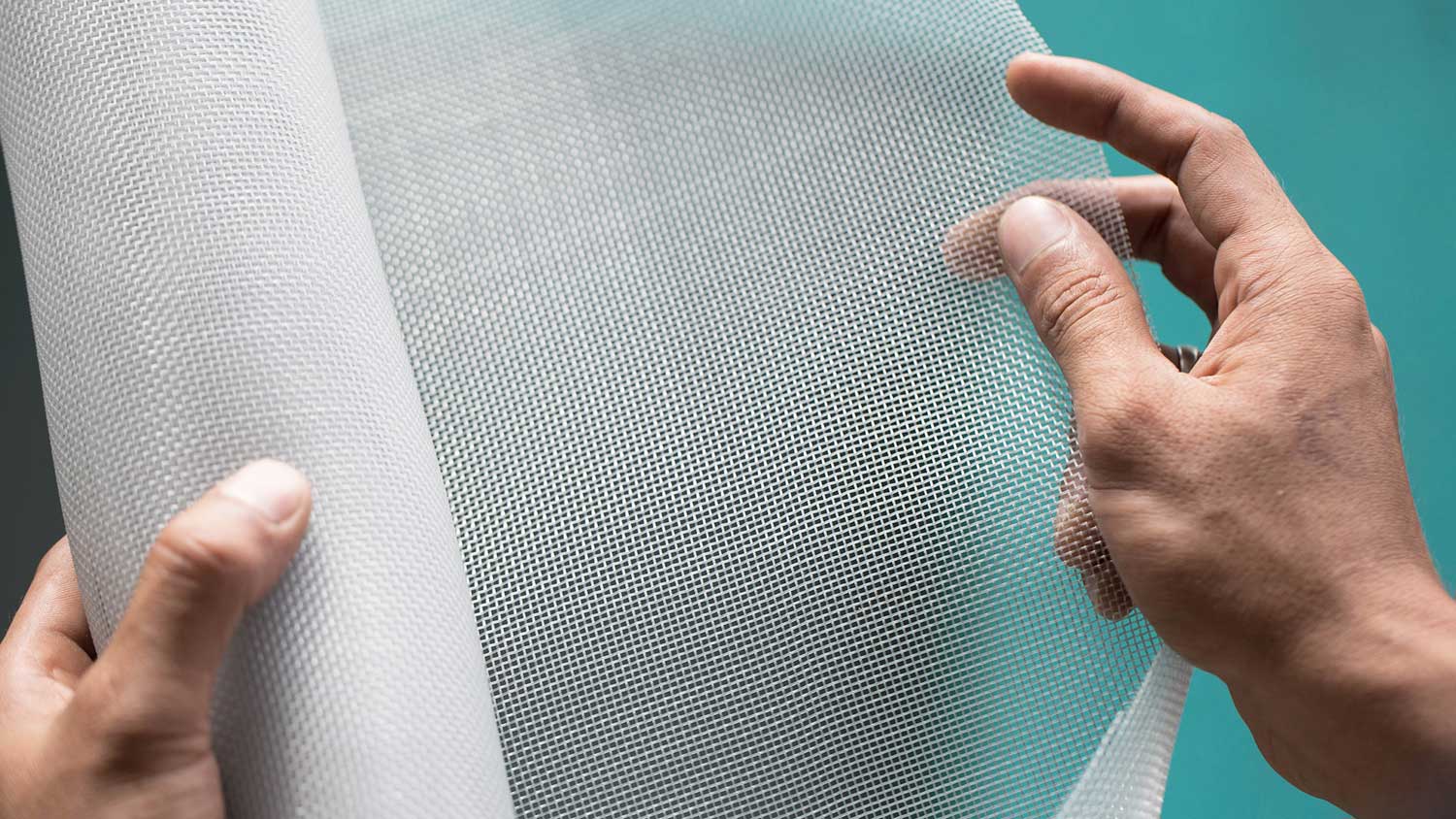
Discover average window screen replacement costs, key price factors, and ways to save and budget for your window screen project.
This easy DIY project takes only an hour or so


No one wants to spend their summer covered in mosquito bites, which is why it’s so important that all your window screens are in tip-top shape. If you’ve noticed bugs or debris making their way inside your home, it’s a good idea to check for holes or cuts in your window screen. Use this step-by-step guide to learn how to replace a window screen in an hour or less.

Before you learn how to replace window screens in your home, make sure you know what kind of material your window screen is made out of (or what kind you’d like to replace it with). Most likely, your screen is made out of fiberglass, which is the most popular material. Other options include aluminum and sun-shading fabric.
You should also measure the window frame to ensure you buy the correct-sized replacement screen. Any screen material 36 inches or taller should have a center support to prevent bowing. Finally, you don’t want to let any critters inside your home while you tackle this DIY project, so close the window in question after you remove your screen.
Before you can start inserting a new window screen, you’ll have to get rid of the old one. The exact method you use to take out your screen may vary depending on your window type. Most people have single-hung or double-hung windows, so that’s the process we’ll be covering.
Unlock your window and slide the bottom sash up so that the window is open and you have access to the screen. There should be screen locks on both bottom corners of the screen, which you’ll need to push inward at the same time. While pushing inward on the screen locks, slide the screen upward to get it into a more manageable position.
Once you’ve slightly lifted the screen, push in just one screen lock while also pressing the frame firmly in the opposite direction (i.e., if you’re pressing in the bottom right screen lock, push the frame to the left). While you’re doing this, push the window screen inwards toward the frame, at which point your screen should release.

Place the frame on a flat, secure surface. Locate the spline—a plastic cord-like piece that runs around the perimeter of the window’s frame—and then gently lift it out of all four sides of the frame using a flathead screwdriver. If it looks to be in good condition, you can reuse it after replacing the screen. If it looks brittle, you’ll need to replace it. Set it aside to bring to a hardware store to ensure you buy a new one that’s the same size.
Once the spline is out, your damaged screen mesh should easily release from the frame. You can either throw the screen away or repurpose it for another DIY.
Unfurl the new screen material over the frame. Cut the mesh to fit the frame so that most of the excess is out of your way, leaving only about 2 or 3 inches extra on each side of the frame. Using scissors, cut off the corners of the screen material a little above the window frame’s channel so that the screen doesn’t scrunch up in the corners of the frame.

Using a spline roller, press the screen mesh into the channel of the frame’s perimeter. Then, secure it in place by then pressing the new spline into the channel over the mesh. Do this step one side at a time, starting with the longest two sides.
To prevent the screen from sagging or bowing, place a brick or similarly heavy object in the center of the screen before installing the spline on the remaining two sides.

Cut away any excess screen material with a utility knife. Angle the knife toward the outside of the frame, and cut as close to the spline as you can, being careful not to damage the spline in the process. Position your new screen in your window frame and tell the mosquitos outside to buzz off.
Replacing a window screen is a relatively easy DIY project that shouldn’t take you more than an hour. But if you have several screens to repair, you might want to consider hiring a local window screen installation professional to save yourself time. The cost to replace a window screen with the help of a pro ranges from $140 to $480 per screen, depending on the materials. Some security or solar models can cost as much as $1,000 to replace.
From average costs to expert advice, get all the answers you need to get your job done.

Discover average window screen replacement costs, key price factors, and ways to save and budget for your window screen project.

Need to remove your dirty, worn-out window screen? Learn how with our easy-to-follow steps for common window types—double-hung, sliding, and more.